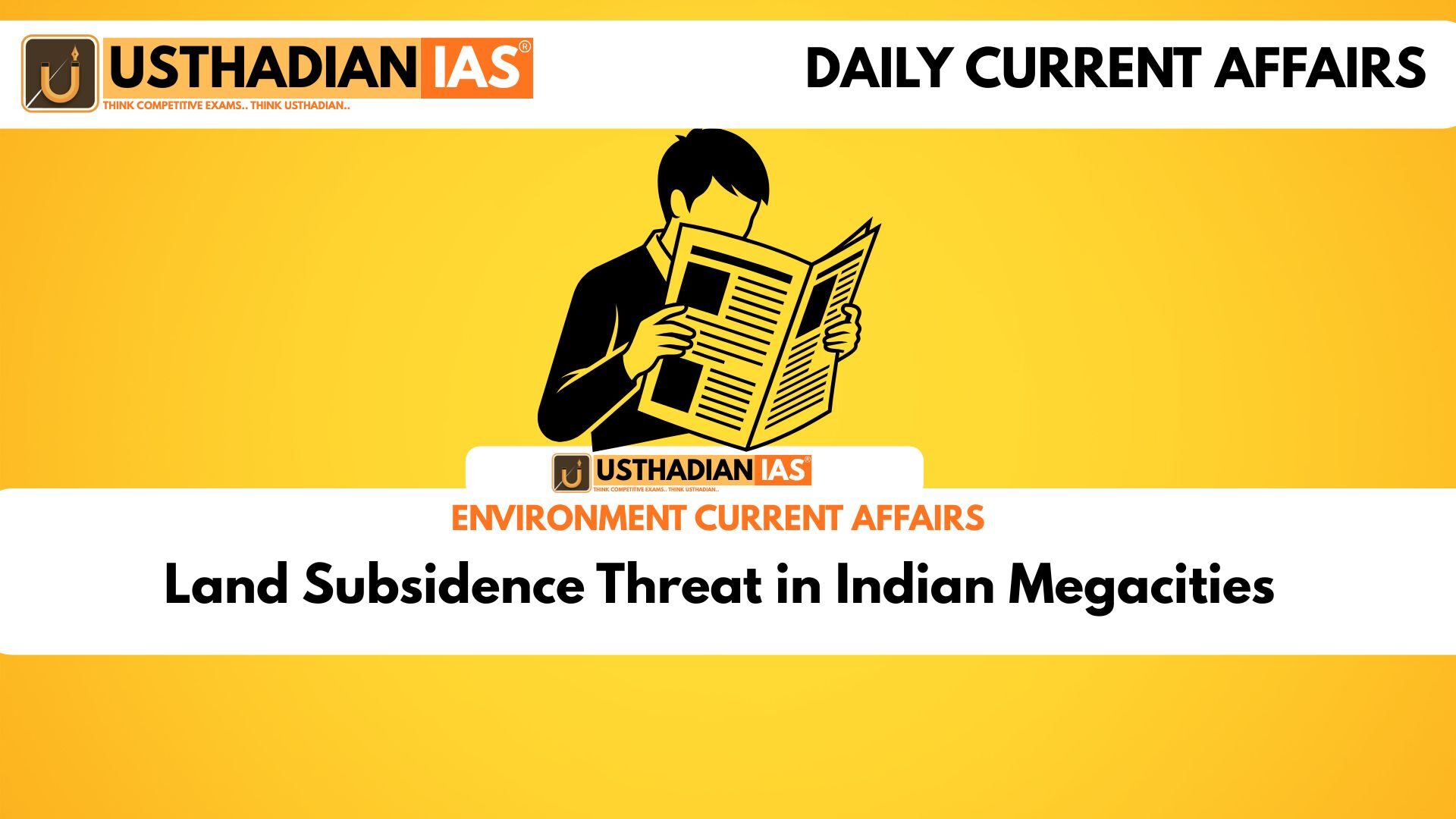Overview
Land Subsidence Threat in Indian Megacities: A recent scientific study (2015–2023) has revealed that five major Indian megacities — Delhi, Mumbai, Kolkata, Bengaluru, and Chennai — are experiencing alarming land subsidence due to excessive groundwater extraction. The sinking of the land is not just a geological concern but a serious urban sustainability and disaster management issue impacting millions of people.
Static GK fact: The term “land subsidence” was first widely used in geotechnical engineering after the San Joaquin Valley subsidence crisis in California, USA, during the mid-20th century.
Scale and Impact
The study highlights that nearly 80 million people are affected, with Delhi recording the highest sinking rate of 51 mm per year. Some regions, like Dwarka in Delhi, even showed localised uplift, indicating uneven ground movement.
In Mumbai and Chennai, subsidence is linked to uncontrolled groundwater extraction and rapid urban sprawl. Kolkata faces additional stress due to its soft alluvial soil composition, while Bengaluru experiences uneven sinking from construction on old lake beds.
Static GK Tip: India is home to six megacities as per the UN classification — Delhi, Mumbai, Kolkata, Chennai, Bengaluru, and Hyderabad — each housing over 10 million residents.
Causes of Land Subsidence
The main drivers include:
- Excessive groundwater pumping, especially for domestic and industrial use.
- Large-scale mining and underground construction disturbing soil stability.
- Rapid urbanisation with heavy infrastructural load.
- Natural crustal shifts and hydrocarbon extraction in eastern regions like Assam and Sikkim.
Regions such as Joshimath and Mussoorie in the Himalayas also report subsidence due to unregulated development, making it a pan-India challenge.
Urban and Environmental Consequences
More than 2,000 buildings in Delhi are already at high structural risk, with roads and pipelines misaligned due to uneven sinking. The phenomenon also causes saltwater intrusion in coastal cities like Chennai and Mumbai, leading to freshwater contamination and agricultural damage.
In the long run, land subsidence disrupts drainage systems, intensifies urban flooding, and damages critical infrastructure such as metro tunnels and bridges. It also poses ecological threats, altering river flows, degrading wetlands, and accelerating carbon release from peatlands.
Static GK fact: The Central Ground Water Board (CGWB) monitors India’s groundwater levels and publishes an annual dynamic groundwater resources report, serving as a key data source for urban planning.
Technologies and Preventive Measures
To combat land subsidence, scientists recommend:
- Artificial aquifer recharge, which replenishes depleted groundwater through percolation tanks and recharge wells.
- Deep soil mixing, involving stabilising agents injected underground.
- Advanced satellite monitoring using technologies like PSInSAR for dense urban zones, SBAS-InSAR for agricultural areas, and SqueeSAR for mountainous terrain.
Urban planners are encouraged to adopt water-sensitive urban design (WSUD) and regulatory frameworks limiting borewell extraction.
Static GK Tip: India launched its first dedicated Hydrogeological Mapping Programme in 2012 to improve groundwater management across states.
Static Usthadian Current Affairs Table
Land Subsidence Threat in Indian Megacities:
| Topic | Detail |
| Study Period | 2015–2023 |
| Affected Cities | Delhi, Mumbai, Kolkata, Bengaluru, Chennai |
| Highest Sinking Rate | 51 mm annually in Delhi |
| Total Population Affected | Nearly 80 million |
| Key Cause | Excessive groundwater extraction |
| Major Consequences | Infrastructure damage, saltwater intrusion, flooding |
| Monitoring Technologies | PSInSAR, SBAS-InSAR, SqueeSAR |
| Preventive Measures | Artificial aquifer recharge, deep soil mixing |
| Responsible Agency | Central Ground Water Board (CGWB) |
| Related Regions | Assam, Sikkim, Joshimath, Mussoorie |








